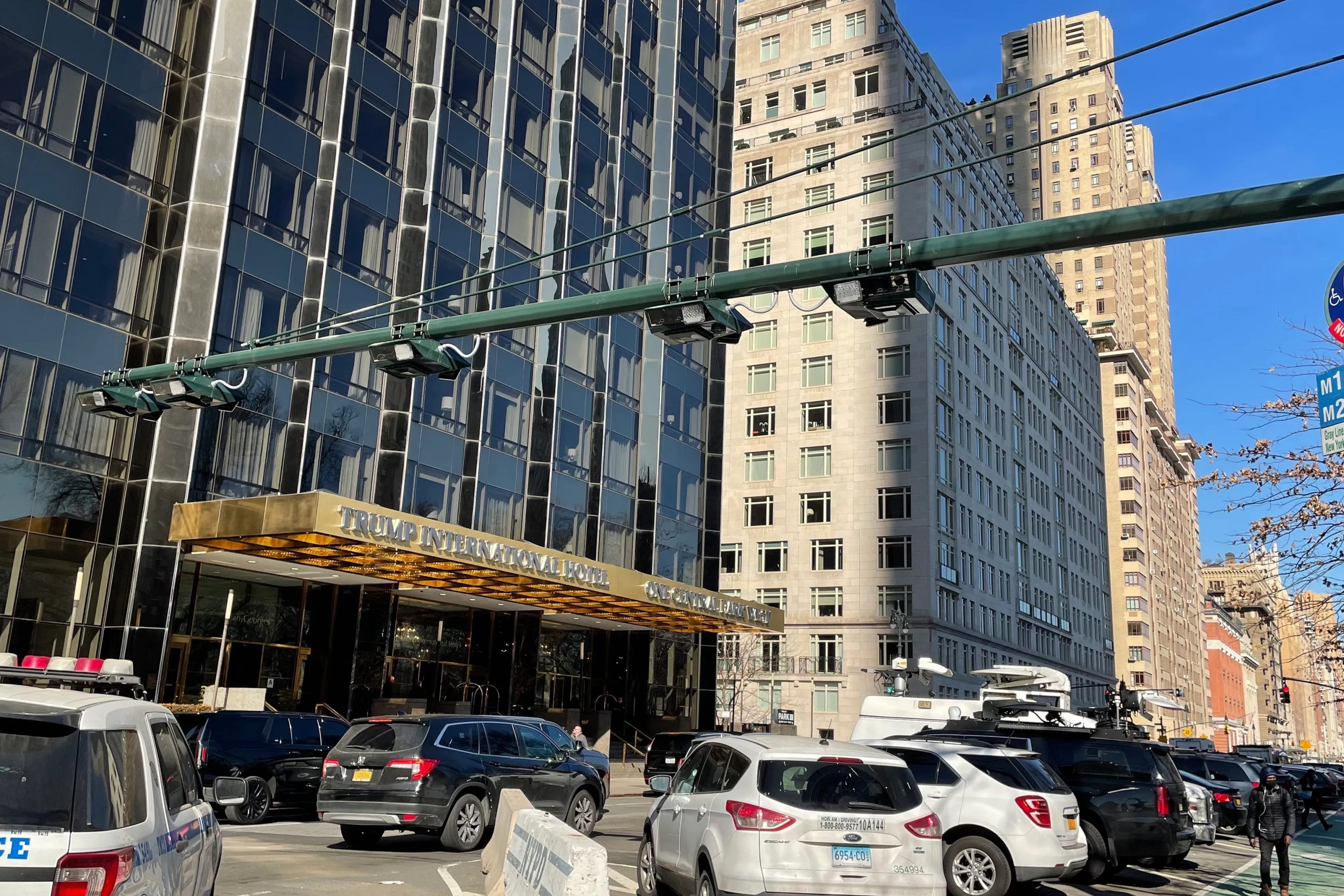"If I put train tracks down the street, you wouldn’t
park your car on them. If I said this is a bus lane, somehow it becomes fair
game. One person’s use of a road impacts upon another person’s use
of the road. My point is, if we have to make a choice, make the choice for the
bus, not for the car.”
-- MTA Chairman Jay Walder, quoted in the New York Times.
These are heartening words for transit
advocates. Incoming MTA Chairman Jay Walder clearly wants to make big improvements to
the agency's 250 bus routes. But given his time, budget and authority, there is a
big gap between what he can do and what he would like to do for buses.
 NYPD cruisers parked in the 34th Street bus lane. When it comes to bus route enforcement, Jay Walder has his hands full.
NYPD cruisers parked in the 34th Street bus lane. When it comes to bus route enforcement, Jay Walder has his hands full.There are four basic ways to
improve bus service: get passengers on and off faster, move buses faster, and
provide more frequent and regular service. The improvements work together. Reductions
in boarding and travel times mean buses can travel farther in less time, and so
provide more service. After modest initial investments in new buses, lanes and
technology, it is possible for bus operators to actually provide more service
for less money. Another consideration is the relative merits of focusing on system-wide improvements, which improve all of the MTA’s 2.4 million daily trips, versus
corridor-specific improvements, like Select Bus Service, which benefit a relatively
small number of riders.
Let's look at the things that
Walder and the MTA can realistically do for buses.
First up:
contactless or “swipe less” MetroCards, like London's Oyster card, which are
waved over a sensor instead of swiped. These contactless cards speed bus
boarding and can save a lot of time over
the course of a day. They also help reduce bus bunching by making
loading times more consistent on every bus. Contactless cards are a mature technology which the MTA has
already funded, and which Walder helped pioneer in London. So, there is every
reason to think he can hurry its implementation.
Walder can also help with the long-delayed GPS
bus locator system and real-time arrival information for passengers. These are also mature technologies which bus
systems around the world use to reduce bunching, troubleshoot delays, and keep
riders informed. To date, the MTA has bungled GPS tracking, and insisted on
trying to solve the canyon effect caused by Manhattan skyscrapers instead of
deploying GPS and passenger information on the huge majority of routes that don't
go through Midtown, or even enter Manhattan. This is a highly visible and
affordable improvement that Walder would get a lot of credit for.
Fortunately for Walder, when it
comes to bus improvements, he has a strong ally in the NYCDOT and the mayor,
who are leading the effort to institute Select Bus Service. SBS routes include
elements of Bus Rapid Transit, including pre-paid boarding, transit signal priority, and painted bus lanes. Planning for SBS is well-advanced, though the
initiative has very modest funding by MTA standards. Currently, DOT and the MTA
intend to roll out one or two new SBS lines a year. Walder may be able to
accelerate SBS through additional planning and funding, and by making the case for more
physically protected bus lanes like the one planned for 34th Street
in Midtown.
During Walder's tenure at Transport for
London, the agency employed express bus lanes and other BRT features to great effect. So
Walder is keenly aware of the need to "prioritize" buses on the street. In his interview with the Times, Walder emphasized the compelling reasons to enforce
bus lanes and bus stops more vigorously. Bus riders, advocates and transit experts all agree on the desirability of better
enforcement. The need is obvious. But increasing enforcement enough to make a
difference in bus service will probably be the most difficult thing for Walder to
achieve.
In London, more than 1,000 automated enforcement cameras mounted on
buses -- and another 50 or so on utility poles -- help keep bus lanes and bus stops
clear of other vehicles. Violations caught by these cameras result in steep fines. Unfortunately, in New York City, enforcement
cameras and increased fines for lane blockers require the approval of the state
legislature.
In 2008, NYCDOT made bus enforcement cameras its highest
legislative priority. But the legislature has a long history of resisting
enforcement cameras of all types. It took from 1993 to 2009 for the city to win
an increase from 50 to 150 red light enforcement cameras. The MTA and transit advocates
first started asking for bus enforcement cameras in the 1990s. Without cameras, enforcing bus lanes and stops is very
difficult. You can do it on small numbers of specific corridors, like Fordham
Road, but overall, it is extremely hard to keep the
thousands of bus stops and hundreds of miles of lanes clear using only police and
traffic agents. Which is why most modern BRT systems use enforcement cameras or physically separated rights-of-way. Whether Albany will grant
legislative approval in the next year for enough cameras to make a visible impact -- or even any
cameras at all -- is a question mark.
The specific approaches
Walder pursues to improve bus service will probably meet with different degrees of success. But overall, his interest in better buses will give a big
boost to efforts to dedicate more street space to transit and surely result in
better service.
This is the second of two posts exploring how incoming MTA Chairman Jay Walder can improve New York City's bus system. Read the first part here.





